6 /10 1 Votes6
4/5 eBay Initial release date 1979 Genre Space simulator | 4/10 Steam Mode(s) Single-player Developers Atari, Atari, Inc. | |||||||||||||||||||||||||||||||||
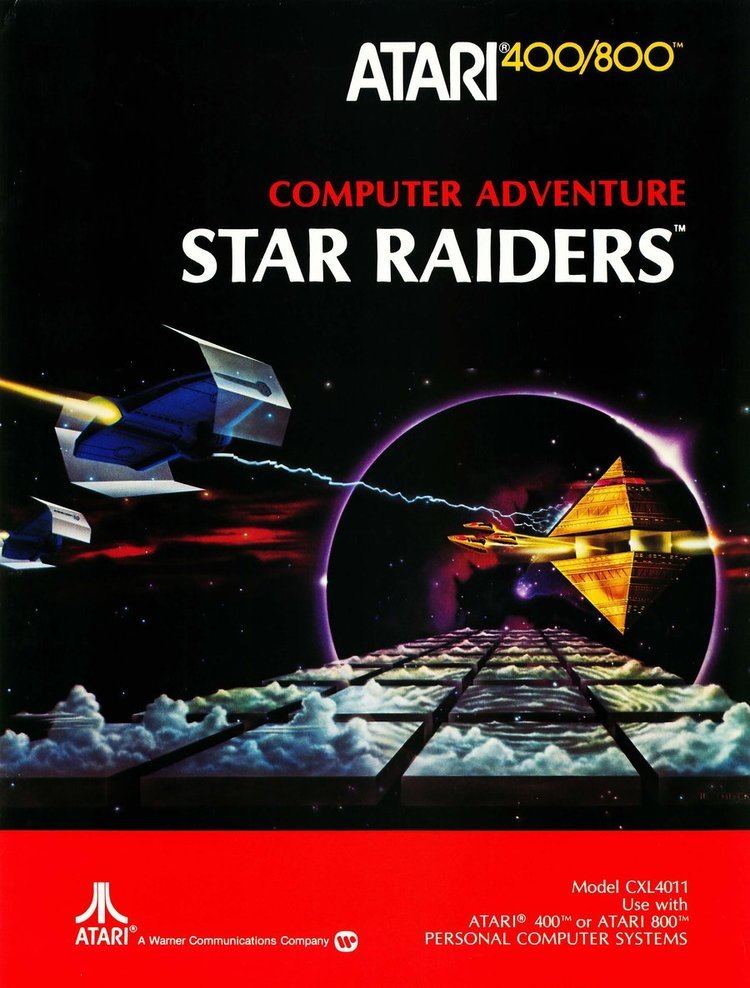 | ||||||||||||||||||||||||||||||||||
Similar Atari - Inc games, Space flight simulators, Other games | ||||||||||||||||||||||||||||||||||
Star raiders atari 8 bit
Star Raiders is a space combat simulator video game for the Atari 8-bit family of computers. It was written by Doug Neubauer, an Atari employee, and released in cartridge form by Atari in 1979. It was later ported to other Atari computer and game platforms.
Contents
- Star raiders atari 8 bit
- Favorite atari 2600 games of willie star raiders
- Production
- Galactic Chart and hyperspace
- Combat damage and resources
- Scoring
- Technical details
- Reception
- Ports
- Sequels
- Remakes and Clones
- In popular culture
- Source code
- References
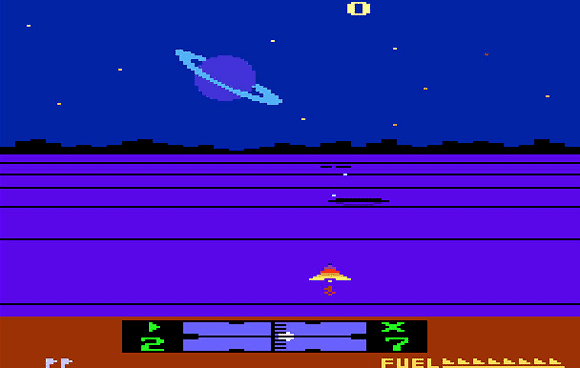
The game simulates combat in 3D between the player's powerful ship and an invading fleet of alien "Zylon" vessels. Star Raiders was distinctive for its graphics, which (under most conditions) represented an out-the-cockpit, first-person view from a fictional combat spaceship traveling through a streaming 3D starfield in pursuit of enemy spacecraft. The game's attract mode, a simple streaming star field, was a common sight in computer stores of the early-1980s to show off the Atari computers' graphics capabilities. The game is commonly referred to as the platform's killer app.
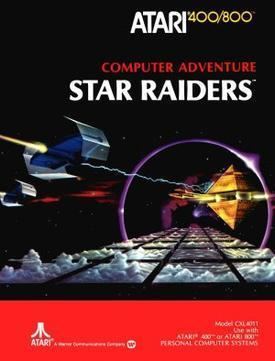
While there had already been simple target-shooting games using this perspective (including 1977's Starhawk), Star Raiders had considerably higher quality graphics and more complex game play. As a result, it inspired both imitators throughout the 1980s and later-generation space combat simulation games. Notably, it is one of the games that inspired the seminal title Elite, and thus the Wing Commander and X-Wing series. It is also one in a series of first person space shooters (including 1977's Starhawk and 1979's Star Fire) that appeared in the late-1970s and were arguably predecessors of the later seen first-person shooter genre.
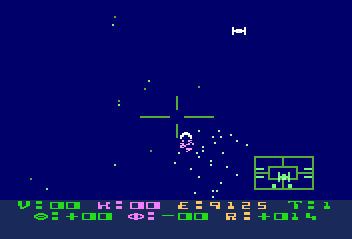
In 2007, Star Raiders was included as #2 in a list of the 10 most important video games of all time, as compiled by Stanford University's History of Science and Technology Collections.
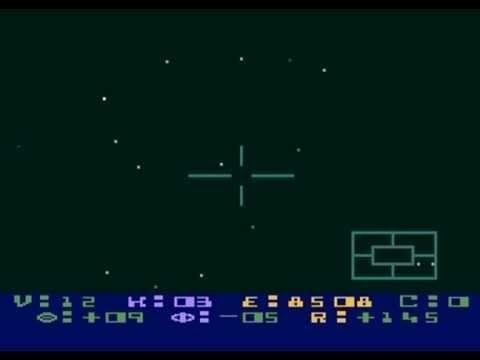
Favorite atari 2600 games of willie star raiders
Production
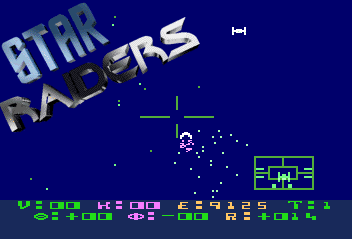
Wanting to make an action-oriented Star Trek-type game, Doug Neubauer designed Star Raiders in about eight to ten months while working for Atari. He left the company while the game was still a prototype to return home to Oregon and join Hewlett-Packard, and reported that it took him six months to reach the highest player-level during development. Star Raiders was unusual at the time for Atari, as it made relatively few game cartridges for its computers, with most being adaptations of Atari 2600 titles.
Galactic Chart and hyperspace
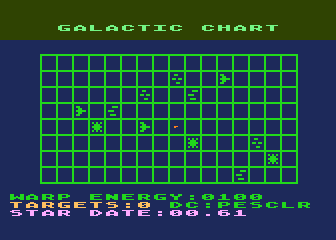
Like the text-based Star Trek games, in Star Raiders the player's ship maneuvers about a two-dimensional grid fighting a fleet of enemy spaceships. In Star Raiders, this part of the game takes the form of a "Galactic Chart" display dividing the game's large-scale world into a grid of sectors, some of which are empty, while other are occupied by enemy ships or a friendly "starbase". The Galactic Map is the equivalent of the earlier Star Trek's Long Range Scan.
Flying about in the 3D view with the ship's normal engines is sufficient for travel within a sector; travel between sectors is via "hyperspace", accomplished through an elaborate and noisy "hyperwarp" sequence with graphics loosely reminiscent of the Star Wars and Star Trek films in which the stars seemed to stretch to radial lines. On the higher difficulty levels, hyperwarp has a skill element; the player has to keep a wandering cross hair roughly centered during the sequence in order to arrive precisely at the desired destination.
Combat, damage and resources
To the Star Trek formula, the game added real-time 3D battles as a space combat simulator. In the main first-person display, the player can look out of the ship and shoot "photons" at Zylon ships, which come in three different varieties reminiscent of ships from Star Wars, Star Trek, and Battlestar Galactica (whose villains were the similarly titled Cylons).
A small targeting display in the lower right corner gives a general indication of a distant enemy or starbase's position relative to the player's ship, and also indicates when weapons are locked on the enemy, at which point the player's weapons fire will track the enemy like a guided missile if the targeting computer is turned on. There is also a "long-range scan" screen showing the surrounding region in a third-person overhead view centered on your ship, operating like a long-range radar display.
Enemy ships come in three types. The standard Zylon fighters resemble the TIE fighter. The more powerful Patrol ships loosely resemble the front-on view of a Klingon Battlecruiser. The most powerful Zylon ship, the Basestar, has a pulsating orange glow and resembles a Cylon Basestar. In order to destroy the Zylon Basestar the player must hit the target at close range.
The game has four difficulty levels; on all but the lowest level enemies fire back, which can cause damage if the player's ship is hit. The ship can also be damaged by collision with random meteoroids. Instead of the multiple lives that were a common video-game convention, the Star Raiders ship has only one life, but is completely destroyed only if hit while its energy shields are lowered or destroyed; otherwise it will sustain varying types of damage, which causes shields, engines, weapons or information displays to be destroyed or damaged.
The player has to manage finite energy reserves as well as damage to the ship; it can be repaired and restocked by rendezvous with a friendly starbase. The enemy can also destroy a star base if allowed to surround its Galactic Chart sector for too long, so the star bases have to be defended. All this lends Star Raiders a degree of complexity and a sense of player immersion that was rare in action games of the era.
One noteworthy flaw in Star Raiders is that it is possible for the player to avoid incoming objects, while stationary, simply by rotating the ship. This happens because the game engine rotates the positions of objects, but does not rotate their trajectories.
Scoring
In contrast to many games of the era, the player can actually win the game by destroying all enemy ships in the galaxy. However, there is no running score display; only upon winning, dying or quitting the game will the player receive a "rating", which is a quasi-military rank accompanied by a numerical class with particularly bad play earning a rank of "Garbage Scow Captain" or "Galactic Cook". The rating depends on a formula involving the game play level, energy and time used, star bases destroyed (both by player or the enemy), the number of enemies destroyed, and whether the player succeeded in destroying all enemies, was destroyed, or aborted (quit or ran out of energy) the mission. Some possible ratings reach from Rookie to Star Commander.
Technical details
Star Raiders uses many techniques that would become common features of Atari 8-bit game programming in the 1980s.
One notable feature of the game was that the main simulation continued running even when the user was interacting with other display. For instance, one might be attacked while examining the Galactic Map. This was unusual for the time, if not unique.
The star field is drawn in a graphics mode that (at full screen coverage) provides 160×96 bitmapped pixels with a palette of four colors. This mode is called "GRAPHICS 7" in Atari BASIC. The use of an indirect palette means that color changes associated with the presence or absence of energy shields, emergency alarms, and the screen flash representing destruction of the ship can be accomplished by simply changing the palette values in memory registers.
Enemy ships, shots, and most other moving objects use Atari's variant of hardware sprites, known as player-missile graphics. The Atari supported only four of these "players" (and four simpler "missiles") but the game sometimes had more moving objects on-screen. In particular, the "radar" display in the lower right of screen was drawn using the background graphics, and updated much more slowly than the sprites. The same was true for the debris particles emitted when an enemy ship is destroyed, and are actually calculated as 3D points. Since the 6502 does not have a native multiply or divide command, the game slows down considerably when several of these particles are active.
The Atari 8-bit family allows different graphics modes and color palettes to be used in different horizontal bands on the screen, by using a simple display list and a type of horizontal blank interrupt. While other games make more extensive use of these techniques, Star Raiders uses them in a relatively simple fashion to combine text displays and graphics; the cockpit display uses a custom character set to display futuristic-looking characters and symbols reminiscent of MICR.
Star Raiders' sounds of engines, shots, explosions, alarms, etc. are synthesized directly using the Atari POKEY sound chip's capabilities. Neubauer was involved in the design of POKEY.
The entire game, code and data, fits into 8K (8192 bytes) of ROM, and requires only 8K of RAM for its working data and display visuals; thus it can run on any Atari 8-bit computer.
Reception
While criticizing the violent gameplay, after seeing a demonstration Ted Nelson wrote, "The Atari machine is the most extraordinary computer graphics box ever made, and Star Raiders is its virtuoso demonstration game". Compute! in 1980 wrote that Star Raiders is "incredibly exciting to play and just about as much fun to watch!" It praised the game's use of color and sound to alert the player, and warned that "THIS GAME IS ADDICTIVE!". "This game is absolutely guaranteed to put calluses on your trigger-finger", InfoWorld stated. The magazine reported that Star Raiders's complexity encouraged cooperative gameplay, and that "over twenty hours of grueling tests by a battery of ingenious children" had proven that it was free of bugs.
BYTE wrote in 1981 "What can you say about a game that takes your breath away? There are not enough superlatives to describe Star Raiders. Just as the VisiCalc software ... has enticed many people into buying Apple II computers, I'm sure that the Star Raiders cartridge ... has sold its share of Atari 400 and 800 computers". It concluded, "To all software vendors, this is the game you have to surpass to get our attention". Electronic Games agreed, reporting that it "is the game that, in the opinion of many, sells a lot of 400 computers systems", and "has established the standards prospective software marketed will be trying to surpass over the next year or so".
Softline in 1982 called Star Raiders "quite a game ... stands repeat play well and remains quite difficult". In 1983 the magazine's readers named it "The Most Popular Atari Program Ever", with 65% more weighted votes than second-place Jawbreaker, and in 1984 they named the game the most popular Atari program of all time. The Addison-Wesley Book of Atari Software 1984 gave it an overall A rating, praising the realistic graphics and sound. The book concluded that "the game is simply great" and that despite imitations, "Star Raiders remains the classic". Antic in 1986 stated that "it was the first program that showed all of the Atari computer's audio and visual capabilities. It was just a game, yes, but it revolutionized the idea of what a personal computer could be made to do."
Jerry Pournelle of BYTE named the Atari ST version his game of the month for August 1986, describing it as "like the old 8-bit Star Raiders had died and gone to heaven. The action is fast, the graphics are gorgeous, and I've spent entirely too much time with it".
On March 12, 2007, The New York Times reported that Star Raiders was named to a list of the ten most important video games of all time, the so-called game canon. The Library of Congress took up a video game preservation proposal and began with the games from this list, including Star Raiders.
Ports
Versions of Star Raiders were created for the Atari 2600, Atari 5200, and Atari ST series of computers. The Atari 5200 version is nearly identical to the computer version, but takes advantage of the 5200's analog joystick and makes some minor graphical changes.
The Atari 2600 version (1982) suffers somewhat from the 2600's weaker graphics and sound capabilities. It shipped with a special keypad controller, the Video Touch Pad, to take the place of the computer keyboard. Although the controller was designed to accept overlays for compatibility with multiple games, Star Raiders was the only game to utilize it. In this version the Zylons are renamed to "Krylons".
The Atari 2600 version was made available on Microsoft's Game Room service for its Xbox 360 console and Microsoft Windows on March 24, 2010. The game is no longer available.
Sequels
Atari produced a sequel, Star Raiders II, without Neubauer. The game was originally developed with no relationship to the original, and was instead a licensed tie-in for the movie The Last Starfighter. When the movie failed to live up to expectations and quickly disappeared from theatres, Atari was left with a completed but largely meaningless game. After some time it was rebranded and released without the tie-in as Star Raiders II. The game was ported to the Commodore 64, Amstrad CPC, and on cartridge for the Atari XEGS.
Remakes and Clones
Many clones of Star Raiders appeared, such as Starmaster (Atari 2600) Space Spartans (Intellivision) and Space Attack. Neubauer's own Star Raiders sequel, Solaris for the Atari 2600, is in many ways more sophisticated than its predecessor, despite the difference in technology between the two systems.
Star Raiders inspired later space combat games like Elite and the Wing Commander series.
Star Rangers, an homage to Star Raiders, was released in 2010 for the iPhone. It was written by former 8-bit game programmer Tom Hudson, who was at one time a technical editor for Atari hobbyist magazine ANALOG Computing. As of October 2014, possibly earlier, Star Rangers is no longer in the iOS App Store.
A re-imagining of Star Raiders, developed by Incinerator Studios and published by Atari, was released for the PlayStation 3, Xbox 360 and Microsoft Windows on May 11, 2011.
In popular culture
In 1983 DC Comics published a graphic novel inspired by the game; it was the first title of the DC Graphic Novel series. It was written by Elliot S! Maggin and illustrated by José Luis García-López. Early production copies of the Atari 2600 version of the game were accompanied by an Atari Force mini-comic (published by DC Comics). This particular issue was #3 in the series, preceded by mini-comics accompanying the Defender and Berserk games. Two final mini-comics followed with the games Phoenix and Galaxian.
Source code
An extensively documented assembly source code of Star Raiders, reverse-engineered from the ROM cartridge binary file, became available on GitHub in September 2015. The original, commented assembly source code of Star Raiders became available in October 2015 in the Internet Archive as scan. The community typed in the source code double checked in a github project, too.
